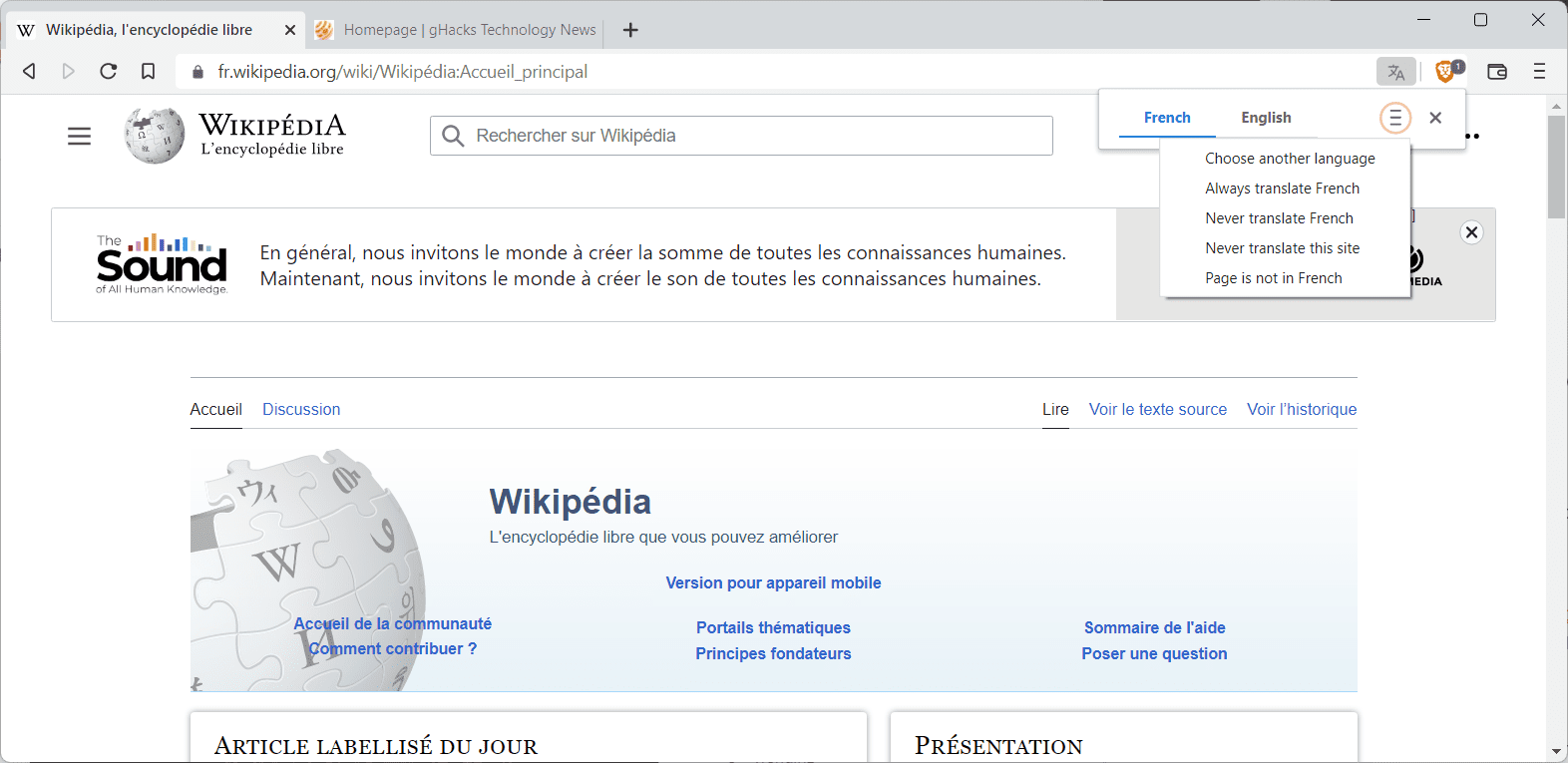Brave browser users may have noticed translate prompts in the browser when they visit foreign language sites for several weeks now. Brave, which relied on Google Translate up until now, has switched the translation feature to a privacy friendly alternative.

When Brave users visited a foreign language site previously, an option to install a Google Translate plugin was presented to them. While that ensured that sites and content could be translated, it was not the most privacy friendly option.
Now, with the release of Brave 1.43.88 for desktop systems and Android in early September 2022, comes the switch to a new translation service. Like Vivaldi Technologies, Brave is using a self-hosted Lingvanex server to power translations.
Whenever Brave users visit a website that is in a foreign language, meaning a language not installed on the user’s device, Brave offers to translate it. The prompt is subtle, displaying only the source and target languages, and a menu icon. Compare to Vivaldi, it is lacking direct access to options, including the ability to pick a different target language and enabling the always translate option.
These are supported by Brave, but only displayed when the menu is selected. All it takes to translate a webpage is to select the default target language. Translations happen quickly, just like in Vivaldi.
The menu displays options to change the target language, preferences to always or never translate the language, or to never display the translate prompt for the active site. The last option gives users an option to switch the source language, if Brave’s detection of the language failed.
Closing Words
Brave’s new translate feature is a self-hosted privacy friendly service that does not require connections to Google to translate webpages. Brave’s translation feature, and Vivaldi’s as well, still requires Internet connectivity. Mozilla’s Firefox Translate feature for Firefox integrates locally into the Firefox browser, which means that users may translate content without making any connections to servers on the Internet.
The one downside to using Firefox Translate is that language support is limited currently.
Still, for Brave users who rely on translate functionality, it is an important feature.
Now You: do you use translate functionality in your browsers of choice?
Thank you for being a Ghacks reader. The post Brave integrates privacy friendly translate option in its browser appeared first on gHacks Technology News.
